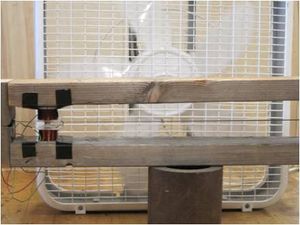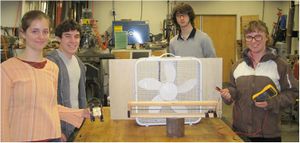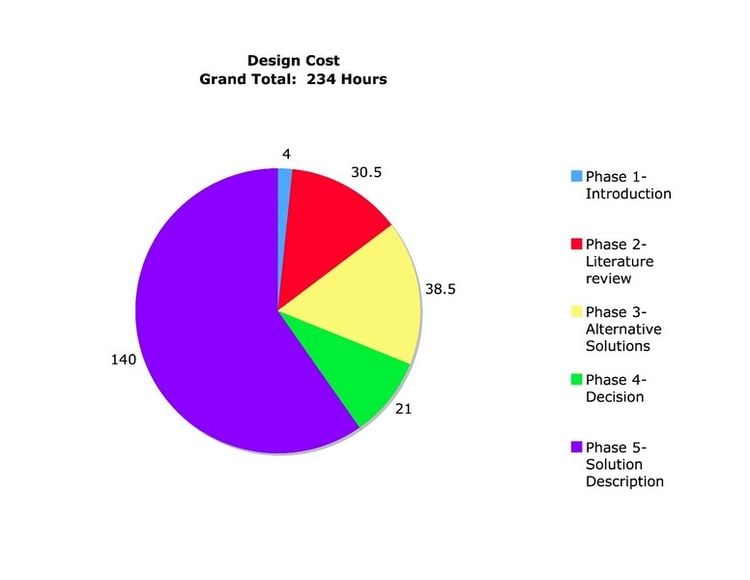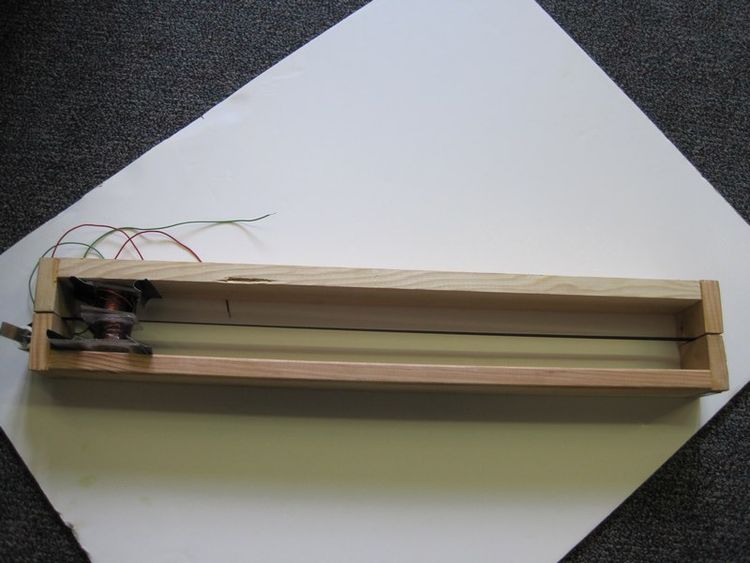

Energy in a Cinch was created by team Aero at Cal Poly Humboldt for Engineering 215: Introduction to Design. This project uses windbelts in a educational curriculum to teach high school students about renewable energy.
Background[edit | edit source]
The Redwood Coast Energy Authority (RCEA) is a joint powers authority that works to educate and promote energy efficiency. The RCEA wanted to develop a series of educational boxes to teach students K-12 about topics regarding energy. Team Aero was chosen to design a box to present Renewable Energy to High School students. Based on Criteria and weights decided on between Team Aero and the RCEA, the finial decision for the project was to create a box with materials to the Energy In A Cinch: Windbelts curriculum. The RCEA will be checking out the boxes to teachers in Humboldt County.
Objective[edit | edit source]
The objective of this project is to design a portable and interactive curriculum that can be taught to high school students throughout Humboldt County. As shown in the black box, the contents of the box will educate high school students about renewable energy and its impacts.
Criteria[edit | edit source]
The Energy in a Cinch curriculum was designed to best meet the criteria that were formed based on client and group decisions. The criteria is shown weighted from 1-10 in the table below (10 being the most important 1 being the least important).
| Criteria | Weight | Description |
|---|---|---|
| Take home knowledge | 9.5 | This relates to the level of student engagement. The students should finish this curriculum having a knowledge base of what renewable energy is, and how it impacts their community. |
| Safety | 9.5 | Components of the curriculum should not harm students. The students should be safe while using the curriculum under supervision by one adult. |
| Level of Student Engagement | 9 | We want the curriculum to be engaging to students, making them use their brain and keeping them attentive. Students should be excited to use this resource to learn. |
| Durability | 9 | The curriculum is expected to be used twice a month by a class size of up to 35 students. The components of the curriculum should be durable enough to withstand this usage for at least a year. |
| Ease of Use | 8 | The curriculum should be simple enough that it can be understood thoroughly by students at a highs school level. The setup/take down should be easy so that the curriculum can be used during 50 minute class periods |
| Cost | 8 | The RCEA allotted each team with $100 dollars, out of which the boxes that are to contain the curriculum were bought. In addition each team member can contribute $75 towards the final design. The total cost could be up to $400. |
| Aesthetics | 7.75 | The components of the curriculum should be visually pleasing and intriguing |
| Transportability | 7.5 | The curriculum must be easily transported to schools in the Humboldt County area. Teachers can pick up the boxes from RCEA, so the box must be light enough that it can be carried by one person. |
| Pertinent to Humboldt County | 7.5 | The curriculum should present information relevant to Humboldt county. This provides a connection for the students. |
Final Design[edit | edit source]
A Windbelt consists of a piece of thin, non-elastic Mylar tape stretched between two points on a base. At one end of the base, magnets are placed on either side of the tape. These magnets rest between two copper coils attached to the base. Windbelts generate electricity as the wind moves the tape or belt up and down creating Aeroelastic flutter. This flutter causes the two magnets to oscillate, which in turn disrupts the magnetic field of the copper coils creating a current.
The Energy In A Cinch kit contains material to build five complete Windbelts of various sizes. Included in the box is a Power Point presentation on various types of renewable energies with a focus on wind energy. A prototype Windbelt is included in the box for demonstrations on proper set up and use. The class will then be broken up into teams and assemble the most efficient Windbelt they can. A fan will be set up so the teams can test their Windbelt using a voltmeter or try to light up an LED light. The teams will then give a short presentation to the class on the results.


| Item | Quantity | Our Cost | Retail Cost |
|---|---|---|---|
| Magnets | 1 set of 30 | $16.01 | $16.01 |
| Mylar Coated Taffeta Tape | 5 Yards | $8.80 | $8.80 |
| 1x3 Lumber | 29 feet | $15.38 | $15.38 |
| Copper Wire | 1 Large Spool | $0.00 | $15.00 |
| Copper Wire | 2-3 Packs/1 Spool | $34.00 | $34.00 |
| Multi-meter | 1 | $29.99 | $29.99 |
| LED Lights | 1-20 pack | $2.99 | $2.99 |
| Bread Board | 2 | $23.90 | $23.90 |
| Spools | 14 | $0.00 | $10.00 |
| Dowels | 28 | $0.00 | $5.00 |
| Epoxy | 1-25 mL Tube | $4.99 | $4.99 |
| Epoxy | 1-10 oz Tube | $4.79 | $4.79 |
| Flash Drive | 1 | $8.00 | $8.00 |
| Tackle Box | 1 | $9.80 | $9.80 |
| Various Nuts and Bolts | Numerous | $5.04 | $5.04 |
| Batteries | 1-4 Pack | $4.49 | $4.49 |
| Boxes | 2 | $22.00 | $22.00 |
| VHS Tape | 1 | $1.09 | $1.09 |
| Diodes | 12 | $4.95 | $4.95 |
| Capacitors | 2 | $3.00 | $3.00 |
| Shims | 1-14 Pack | $2.49 | $2.49 |
| Screw Driver | 1 | $4.99 | $4.99 |
| Sand Paper | 2 Sheets | $2.50 | $2.50 |
| Alligator Clips | 4 | $2.60 | $2.60 |
| Gorilla Tape | 1 Roll | $4.99 | $4.99 |
| PVC Pipe | 2 | $0.00 | $10.00 |
| Total Price | $216.79 | $256.79 |
Assembly[edit | edit source]
- Assembly of Windbelt
-
Step One -
-
Step Two -
-
Step Three -
-
Step Four -
-
Step Five -
-
Step Six -
-
Testing -
-
Finished -
Testing and Implementation[edit | edit source]
The students really enjoyed the project but were frustrated they could not easy achieve equal voltages between the two coils.
With the feedback and results, it was decided to instead of splitting the class into groups of five for a class of 30, the class would be split into group of 2 or 3. In order to accomplish this, the windbelts were split in half so that groups would only have to concentrate on perfecting the output of one coil.
Authors[edit | edit source]
Final Document








